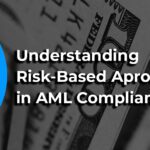
Risk-Based Approaches in AML Compliance: What you need to know
June 6, 2025Regulatory compliance isn’t just a checkbox—it’s a business imperative. In today’s increasingly scrutinized financial landscape, the cost of non-compliance can be devastating. From multi-million-dollar fines and license suspensions to lasting reputational harm, non-compliance can cripple even the most well-funded organizations.
In this blog, we examine the financial and reputational risks of falling short on compliance, and offer practical insights to protect your business from exposure.
What is Non-Compliance in Financial Services?
Non-compliance refers to a business’s failure to meet regulatory standards, whether in AML/CFT, KYC verification, licensing requirements, or reporting obligations. These failures may be deliberate, negligent, or a result of weak internal controls.
Examples of non-compliance include:
- Failure to file suspicious transaction reports (STRs)
- Inadequate customer due diligence (CDD)
- Operating without a valid Payment Service Provider (PSP) license
- Breaches of data privacy or sanctions regulations
The Financial Impact of Non-Compliance
The cost of non-compliance isn’t theoretical—it’s quantifiable.
Global Statistics
- In 2022 alone, global financial institutions were fined over $5 billion for AML, KYC, and sanctions violations.
- On average, non-compliant businesses spend 2.7x more on remediation than compliant peers (LexisNexis, 2023).
Hidden Costs
Beyond fines, non-compliance also drives:
- Increased audit costs
- Legal fees
- Operational disruption
- Customer churn due to loss of trust
Explore our Compliance Consulting Services
Reputational Damage and Long-Term Brand Risk
While fines hurt, reputation damage often leaves the deepest scars.
- Customer Confidence: Consumers today are compliance-conscious. A regulatory breach can lead to mass customer exodus.
- Investor Relations: Non-compliance signals weak governance, driving down valuations.
- Partnership Losses: Banks and PSPs may sever ties with non-compliant firms to protect their own risk exposure.
Stat: A World Economic Forum report notes that 25% of a company’s market value is directly tied to its reputation.
See glossary: Compliance consulting
Real-World Examples and Enforcement Actions
1. Wirecard Scandal (Germany)
The fintech giant collapsed after it was found to have falsified accounts, with billions unaccounted for. Regulatory gaps and compliance failures were central.
2. Capital One (US, 2020)
Fined $80 million by the OCC for failures in risk management and data security compliance.
3. Binance (2023)
Crypto exchange fined over $4 billion for failing to implement effective AML controls, leading to one of the largest compliance settlements in history (Reuters).
How to Avoid Compliance Failures
Avoiding non-compliance requires a proactive, risk-based, and well-documented approach. Here’s how to stay ahead:
Conduct Regular Risk Assessments
Assess evolving risks across customer profiles, geographies, and services. Update controls accordingly.
Automate KYC and AML Monitoring
Use smart tools that adapt to customer behavior and flag anomalies in real time.
Train Staff
Ensure all departments—not just compliance—understand their regulatory responsibilities.
Maintain Documentation
Every decision, policy change, and alert resolution should be recorded for auditability.
Conclusion and Action Steps
Non-compliance is expensive, unpredictable, and entirely preventable. With increasing regulatory expectations and cross-border collaboration, firms can no longer afford to take shortcuts.
Actionable Takeaways
- Conduct internal audits at least annually
- Update your AML/KYC policies as regulations evolve
- Invest in compliance staff training
- Monitor key risk indicators (KRIs) regularly
- Partner with experts for strategic compliance planning
Subscribe to our newsletter for compliance insights



